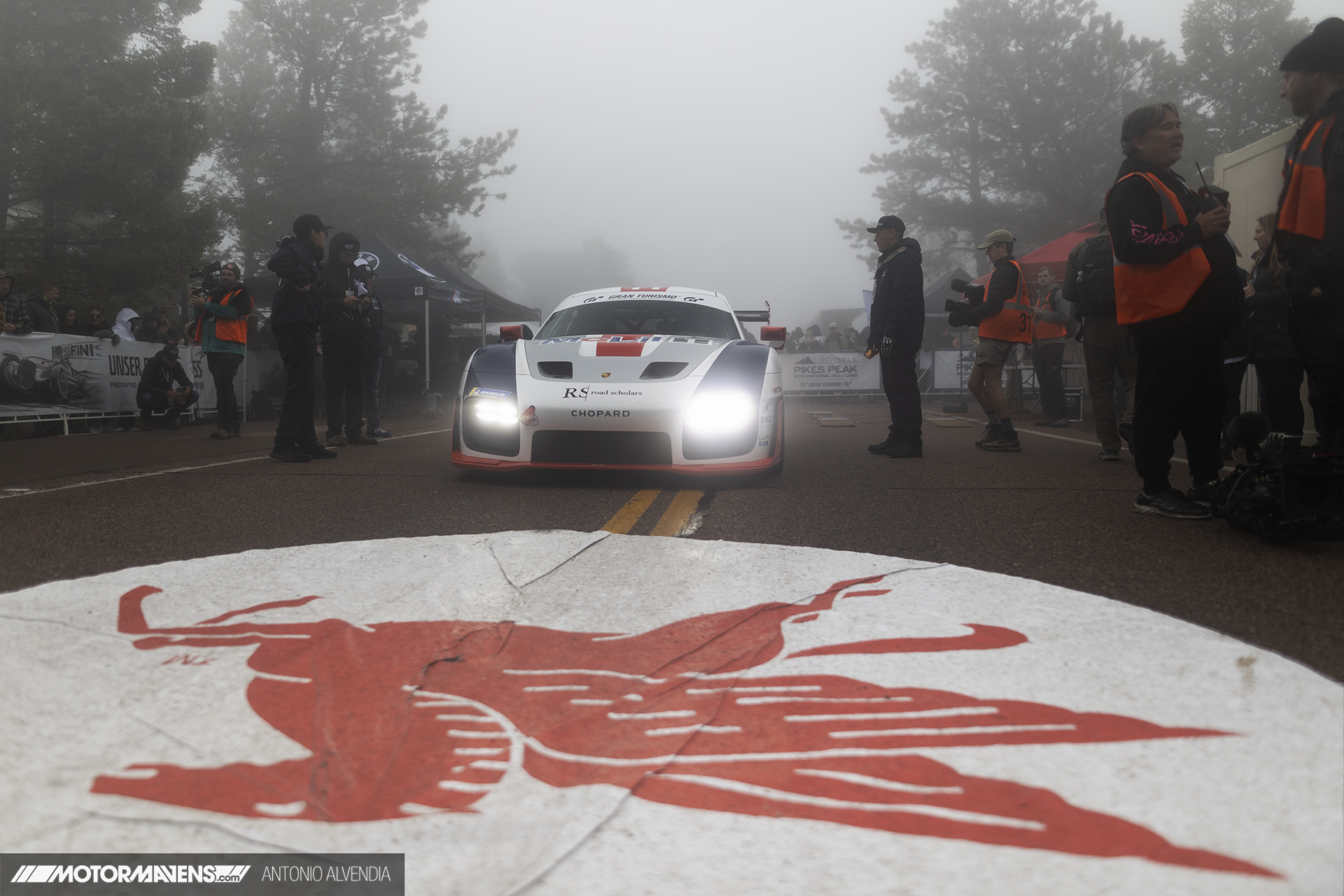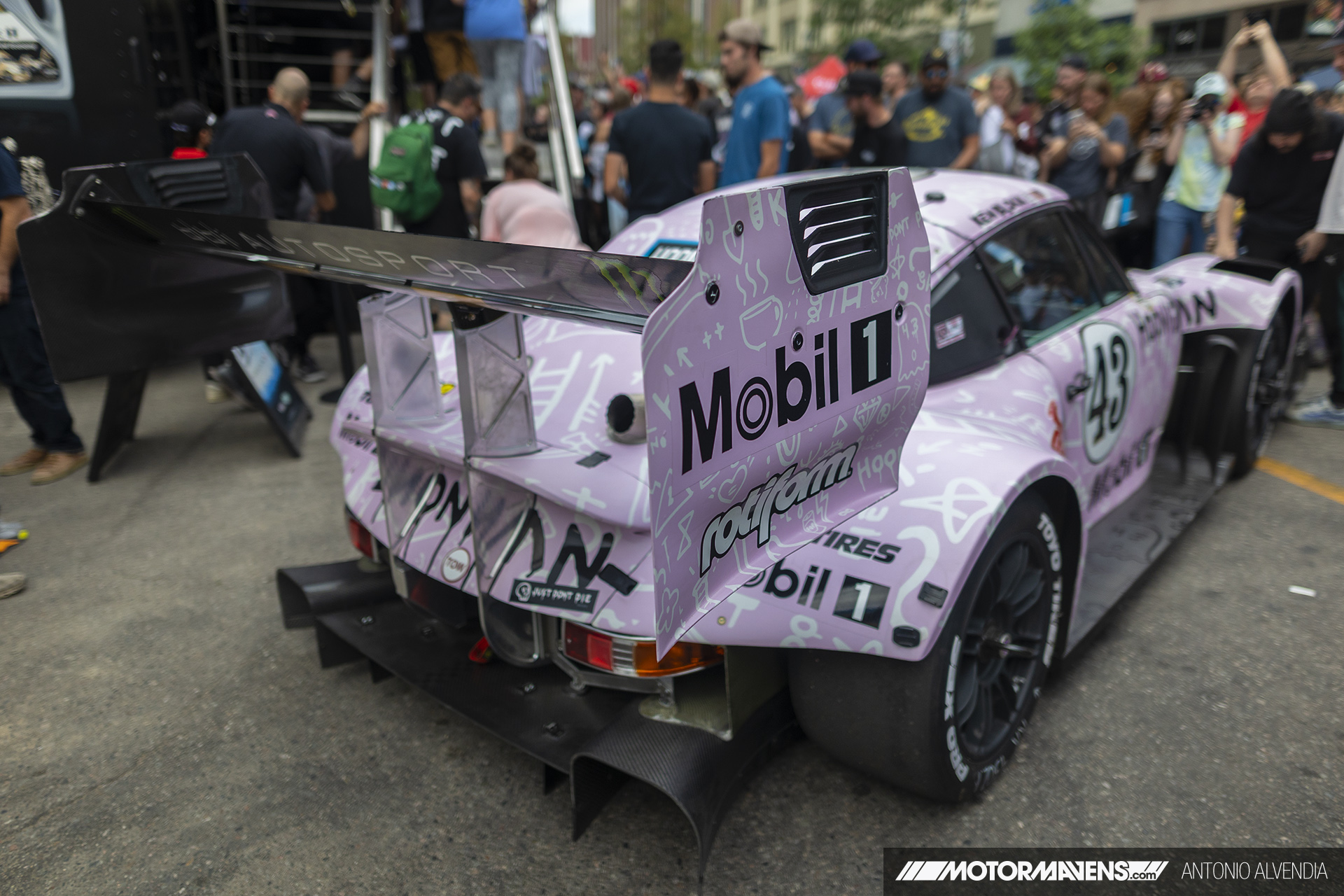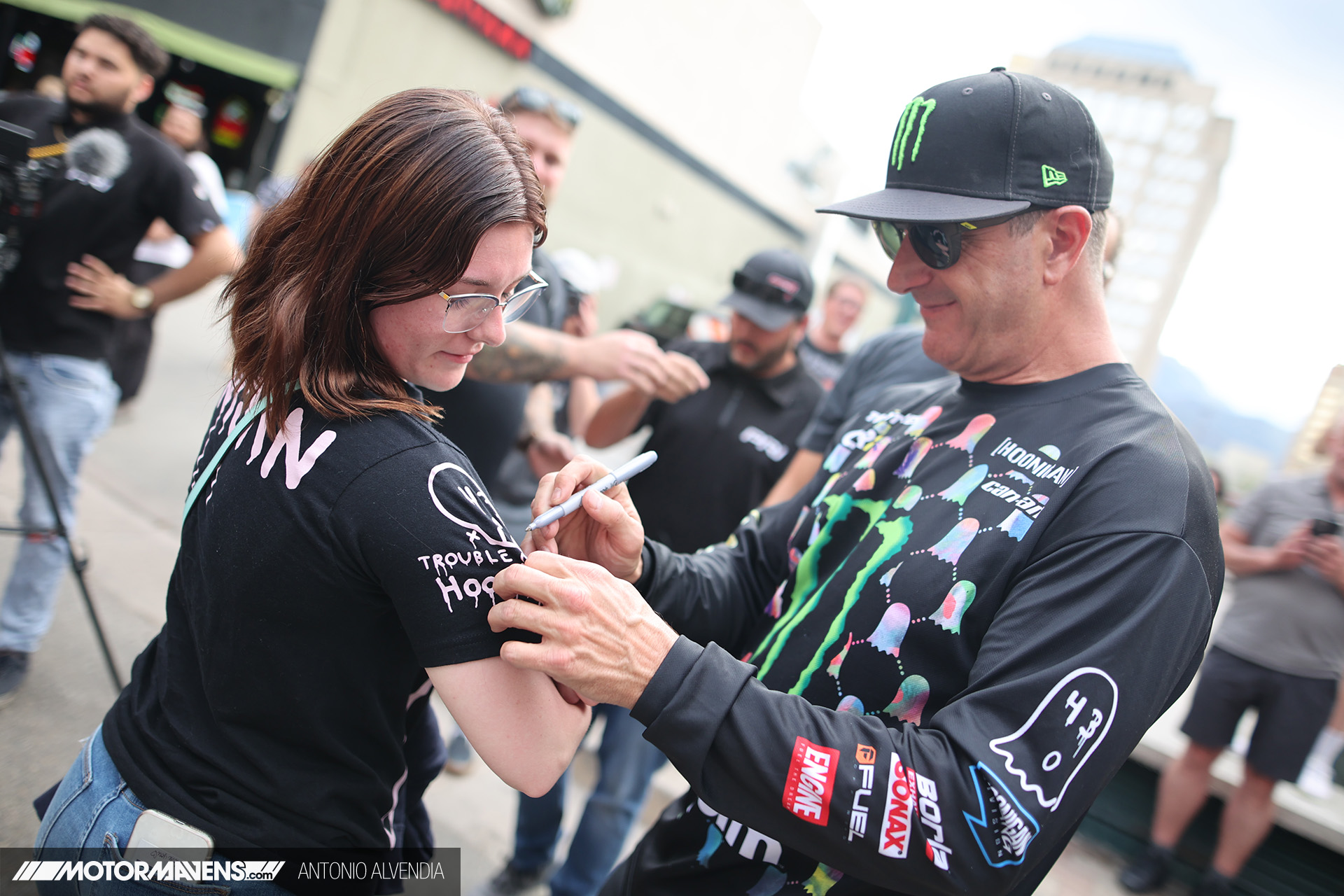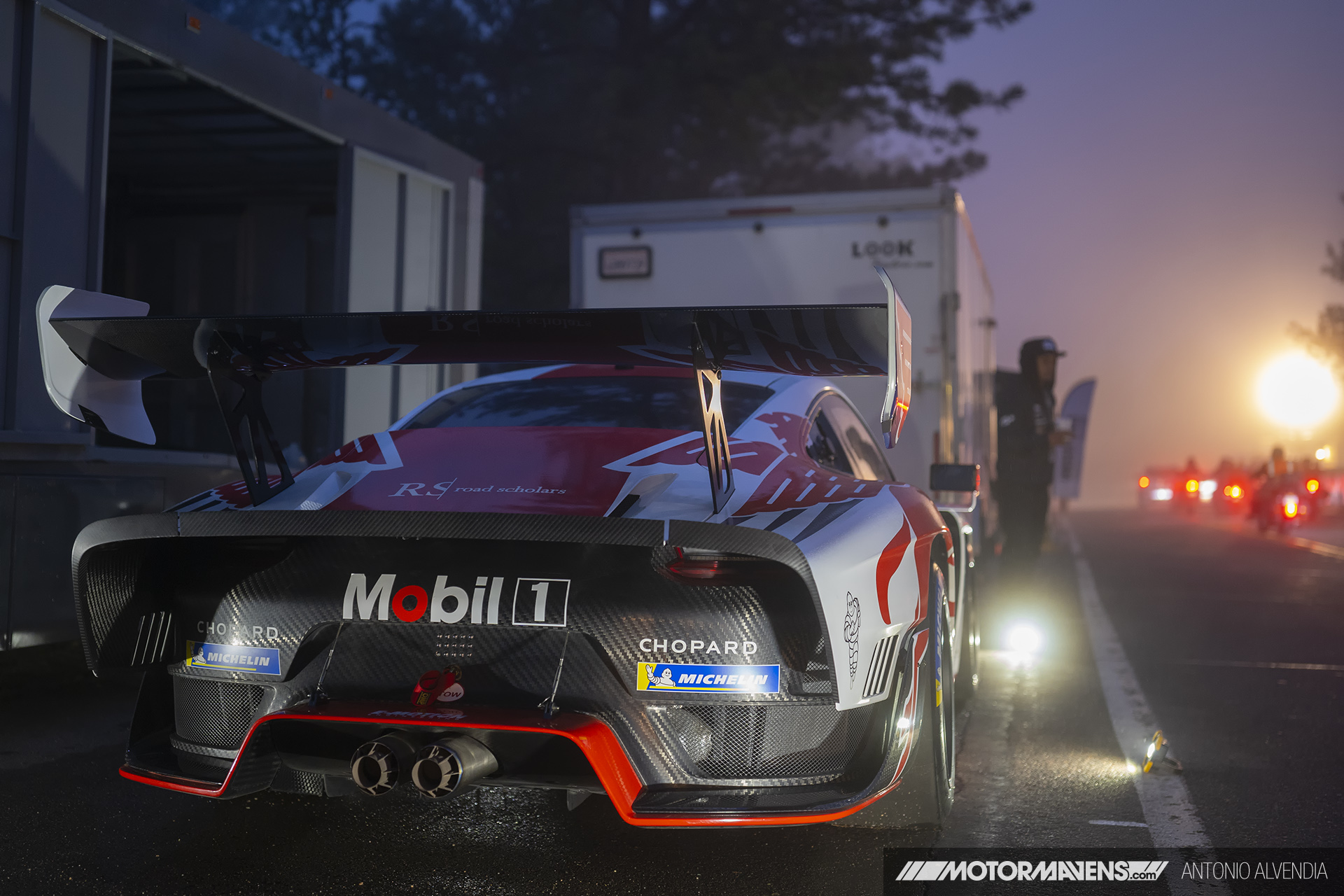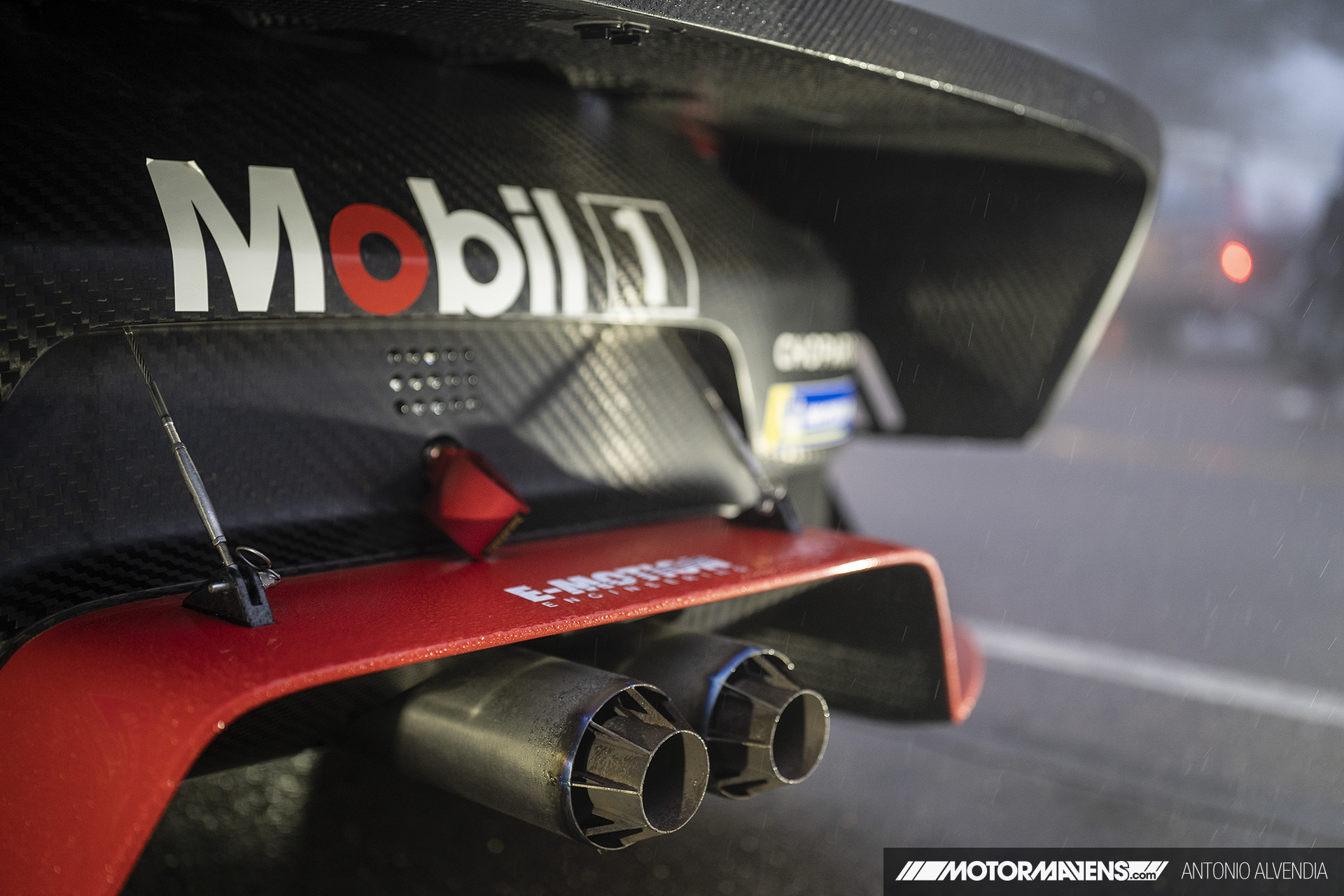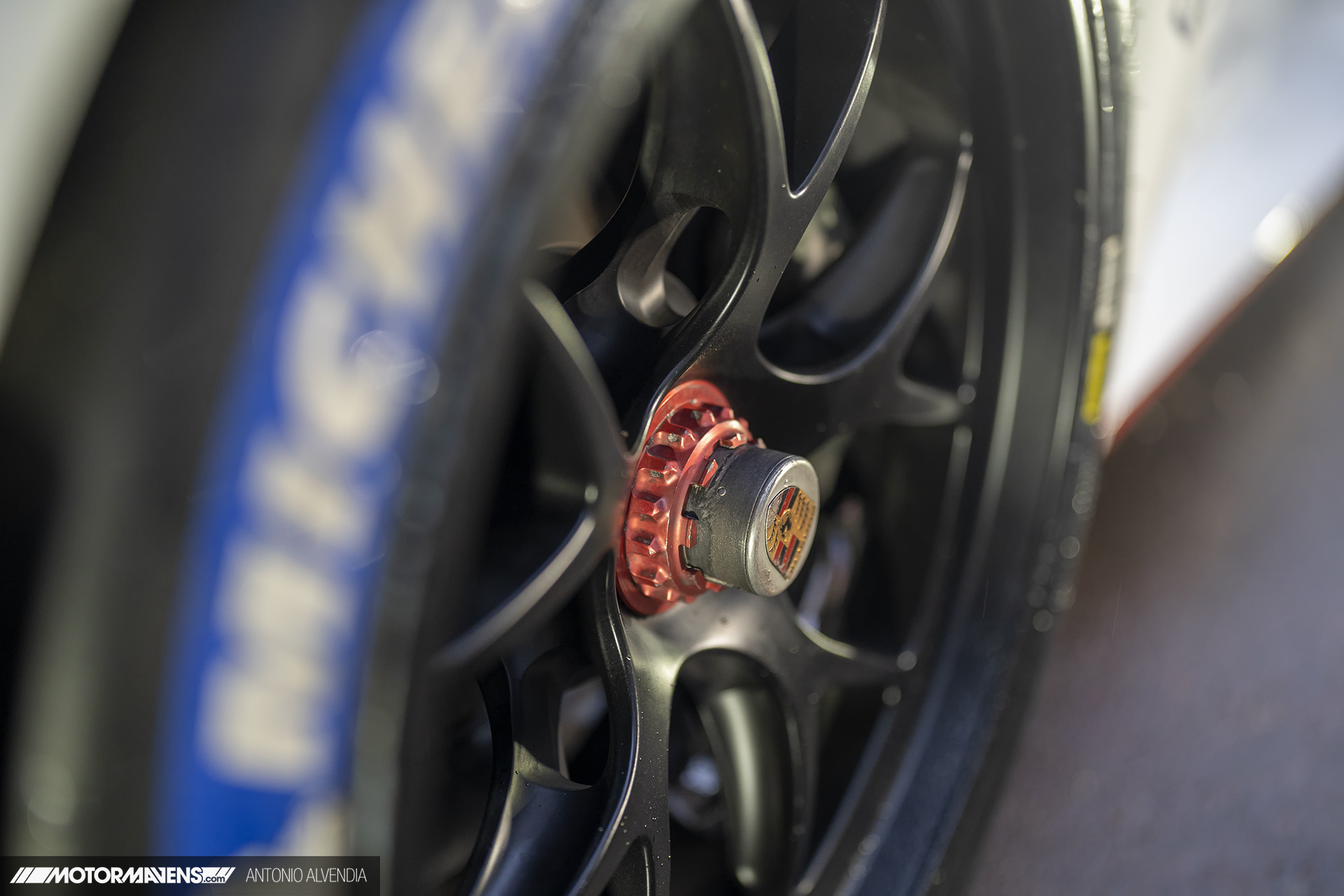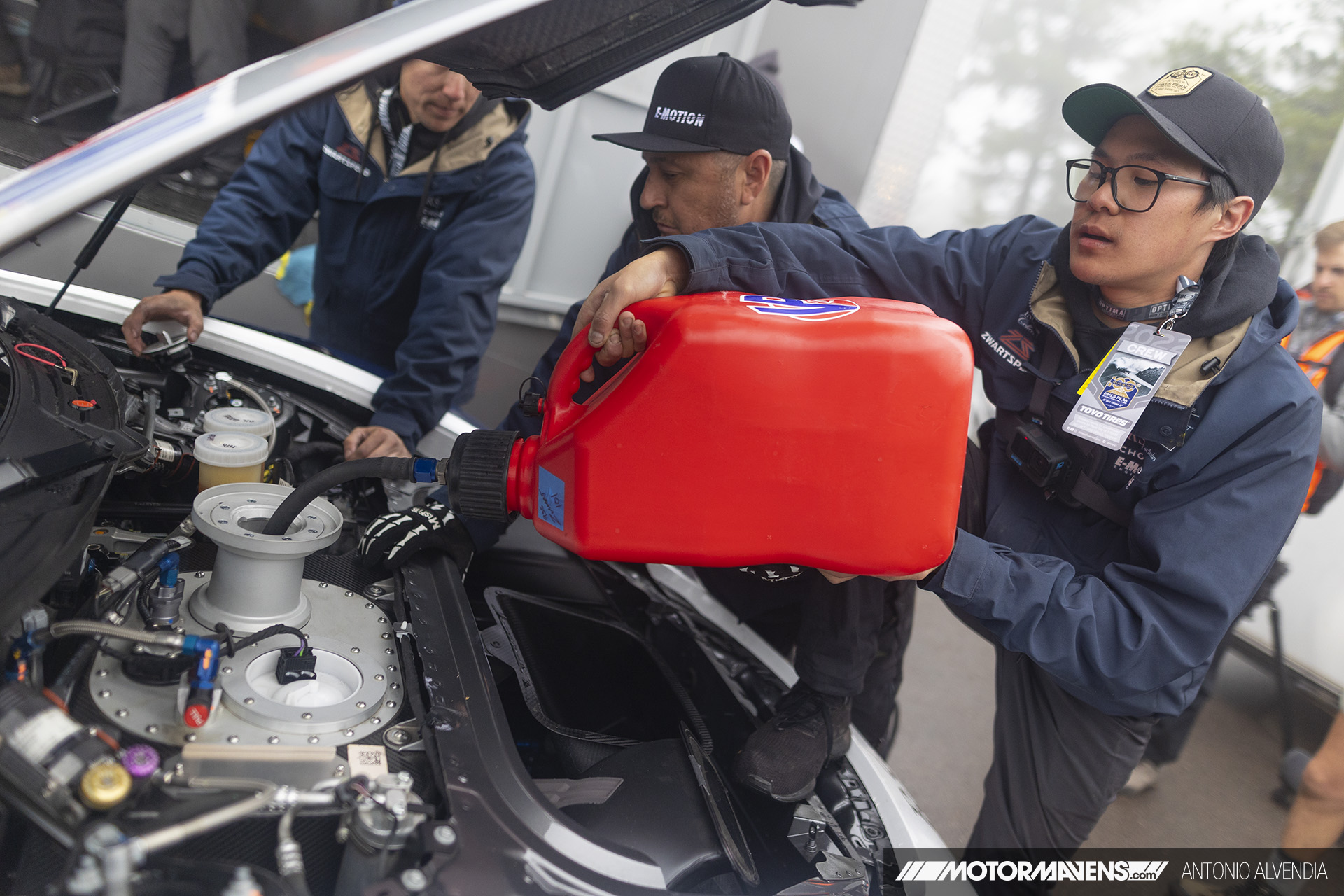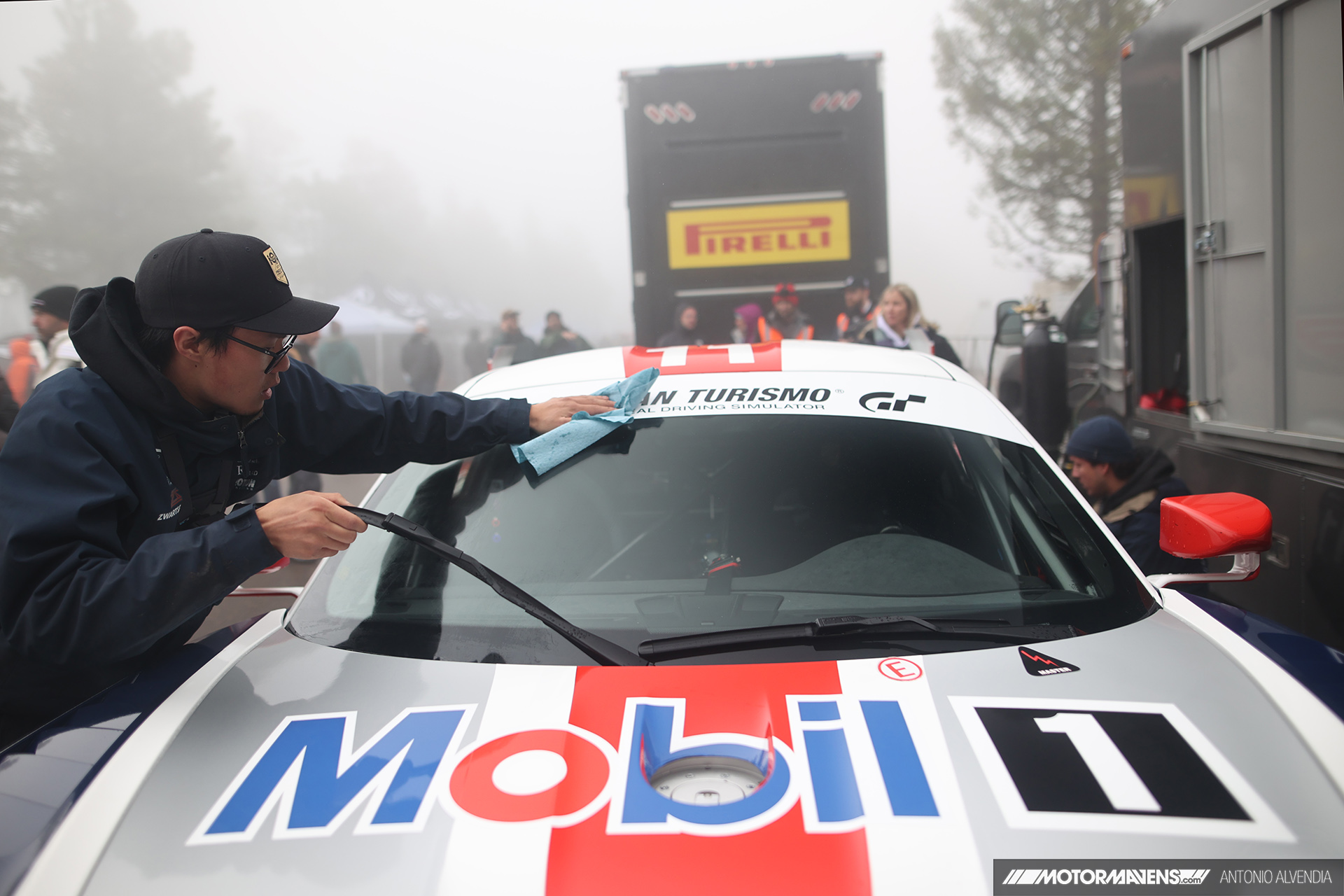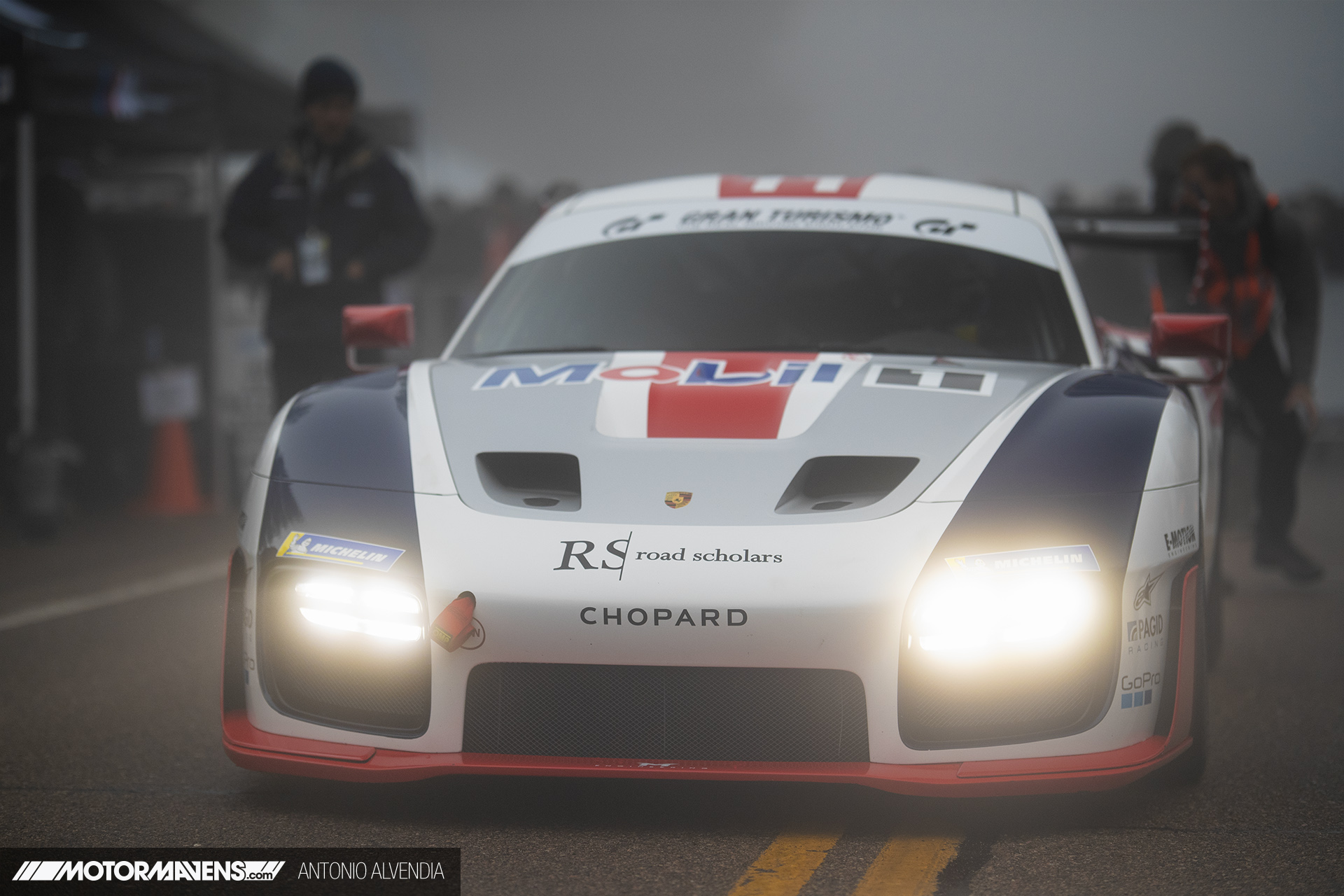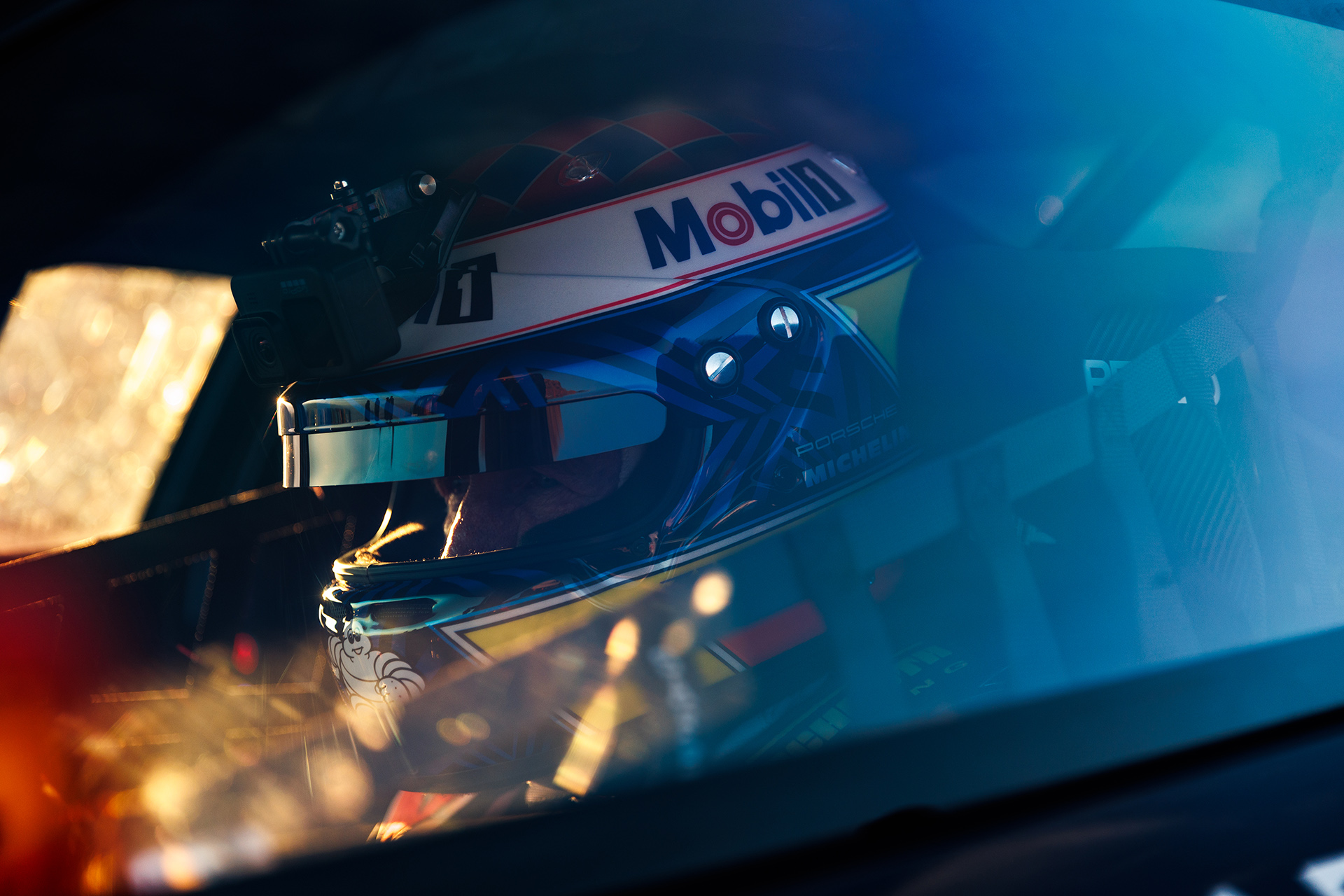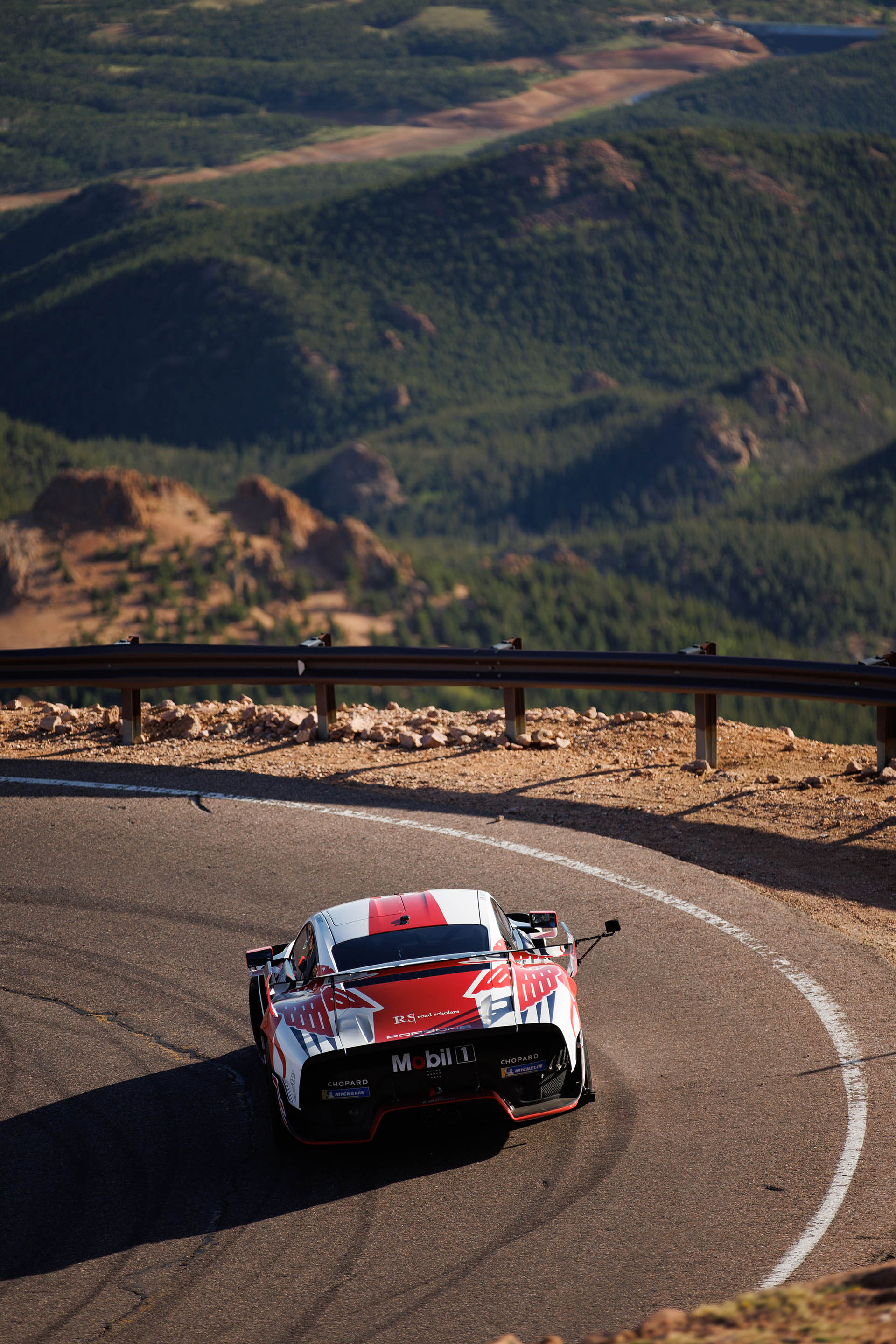The sensory experience at the 100th running of the Pike’s Peak International Hill Climb was nothing short of amazing. At daybreak, the headlights of the high horsepower hill climb machines pierced through the cold, dense fog as the competition cars made their way to the starting line.
You could see and feel the steam piping out of the exhaust tips as cars slowly moved through a wall of closely-packed spectators like Moses parting the Red Sea, every single person with an iPhone out, trying to capture these historic moments.
Anxious race teams scurried around their racing machines as they advanced in line, hustling to defrost the windows and soften their tire compounds with tire warmers in hopes of achieving just a little more grip on the dewy mountain pavement.
As drivers tightened the chin straps on their helmets, many battled their own insecurities, trying to block out even the waves and smiles from well-wishers in the crowd, switching into tunnel vision so they could focus on the mission ahead.
This was the scene at this year’s Race To The Clouds, where seventy-one drivers risked life and limb to earn their place in history at the 100th running of the second oldest race in America.
With tons of epic cars and legendary drivers in attendance, there were plenty of storylines to follow at Pike’s Peak this year.
However, before we dive into details about some of the cars and the drivers, I thought it might be interesting to briefly touch on the history of the event, which was first run in 1916.
Located near the city of Colorado Springs, just a little over an hour’s drive from Denver, Pike’s Peak got its name from an early explorer named Lt. Zebulon Pike, who was commissioned by Thomas Jefferson to explore the Great Plains and Colorado. When he first laid eyes on the mountain in 1806, Ol’ Zeb knew he was staring at something special.
One could even say, when Pike first peeked at the peak, it piqued his interest.
Since the top of the mountain is over 14,000 feet above sea level, Ol’ Zeb swore that this mountain would never be climbed by man. By making such a bold proclamation, it sounds as if Zebulon Pike was a man who might have had some self-limiting beliefs – clearly not the type of guy who would listen to an Anthony Robbins Personal Power audio program. Little did he know that by the mid-20th century, Pikes Peak would be conquered by men, women, mules, horses, motorcycles, cars, and even *gasp* Teslas.
On the Friday before the big race, the city of Colorado Springs hosted a PPIHC Fan Fest, with all the competition cars parked out on the city streets so people could see all the cars up close and personal.
One of the most anticipated cars at the Fan Fest had to be Ken Block‘s newly built 1400hp Porsche GT3-powered 911, nicknamed “The Hoonipigasus” by the guys at Hoonigan. More details on the car can be found in this previous story on MotorMavens.
By now, everyone has already seen on social media that Ken’s newly built high strung 1400hp engine had some issues in practice, and the Hoonipigasus didn’t make it to race day even though it did look very promising earlier in the week.
This must have been heartbreaking for Ken, but he still showed up to the Fan Fest to sign autographs and take photos with fans, who swarmed the Mobil 1 trailer on all sides to get a glimpse of Ken and his newly built pink Porsche.
Race prepared by BBi Autosport, the widebody 911 with functional aerodynamics did look amazing ascending the mountain earlier in the week, during practice.
One could even say it looked like a scene from a video game.
While many were left disappointed that Ken Block and his newly built Porsche 911 “SVRSR” didn’t make it to race day (especially Ken and his sponsors), this is not an uncommon occurrence in racing, especially when a car is newly built. These things happen.
I mean, what would you expect when you’re attempting to challenge one of the oldest races in America with a brand new race car build – especially the first-ever mid-engine, AWD, twin-turbo vintage Porsche 911 that’s set to compete in the PPO (Pikes Peak Open) class?
Rather than looking at this occurrence as an equipment failure, I think that this just sets things up for Ken Block and team to tell a more compelling story next year when they return to the mountain. Hopefully by then, they have A LOT of test days at high altitude under their belts, and come prepared with an extra engine, transmission, and axles just in case.
Even though we left our hotel in the city of Colorado Springs at 2:15am in order to get to the start line, there were so many cars trying to get up the mountain to secure a good parking spot, it still took us over 2 hours to get to our parking spot. While most of the race cars were under car covers, buried deep within their EZ-up tents, I noticed that Jeff Zwart‘s crew had their car out of the trailer, and had begun preparations already.
Seeing this mighty Porsche 935/19 in the darkness of the forest was honestly a sight to behold.
You gotta give it to Zwart – this is a man who built a career and reputation on his prowess in creating striking visuals for magazine ads and commercials. He obviously knows how to present a vehicle and make people pay attention.
It came as no surprise to me that his car was the only vehicle with lights shining on it in this way. The way his 935 was presented at Pike’s Peak made it look more like a concept car debut at Rennsport Reunion than a race car in the middle of the wilderness, parked next to race trailers, tow rigs, and Honey-Bucket porta potties.
Would-be Pike’s Peak competitors in Porsches look to him for driving tips, but marketing execs at overland companies can also learn a lot from the way Jeff Zwart presents his race car.
As daylight broke and the sky began to lighten, a steady stream of spectator vehicles drove past the 935, which was parked right on the main road so all the passersby could gawk at this marvel of Porsche precision.
There are quite a few bespoke Porsche builders like Singer Vehicle Design and Guntherwerks rebodying 964 chassis Porsche 911s with high end vacuum formed carbon fiber body pieces, and they look great and all… but the bodies of other cars just don’t hit you in the same way the symmetrical carbon weave of the modern Porsche 935 does.
In 2018 when Porsche debuted their modern redux on the legendary 935, jaws (and presumably, panties) dropped. As a big fan of the original “Moby Dick” Porsche 935 from the late 1970s, I have a massive reverence for the modern 935… and I’m clearly not the only one.
Underneath the skin of this modern 935 lies the same underpinnings of the 991 Porsche 911 GT2 RS. If you haven’t seen one in real life before, don’t feel bad, because this beast was hand made in ultra limited numbers.
According to Road & Track, only 77 of these 935s were made when when the car was released, at a bargain price of $817,000. In 2020, one of them was sold at an online auction held by RM Sotheby’s for $1.5 million. Just imagine looking at a car online with a price tag of $1,500,000.00 and having enough disposable income to tell yourself, “Yep, screw it. Adding it to Cart.”
Goals! Seriously.
Taking a closer look at the car details, the shape of the exhaust tips makes me think of the afterburner nozzles of an F-14 Tomcat. Well, maybe it’s also because I just recently watched Top Gun: Maverick.
The 935 comes with swan neck aero mirror bases, but the mirrors themselves are pretty large and functional. Just in front of the mirror on the passenger side door, you can see the 2022 Pike’s Peak tech sticker, complete with with QR code for the driver info. Fancy!
A close look at the hood will reveal two intake scoops, and this rather large drop vent just in front of the fuel filler.
The front bumper has a set of four integrated LED driving lights and a lower chin spoiler in red, with built in canard winglets to direct air.
If you look closely above the Michelin tires, you’ll notice some beautiful carbon weave peeking through the vented fender tops, which provide aero relief, so that the inside of the fenders don’t become turbulent with dirty air. In essence, these blue vents on the fender tops allow the dirty air to escape the high pressure zone normally at the top of the fenders, giving the car even more downforce as it makes its ascent up America’s Mountain.
Same thing goes for the vents at the rear of the front fenders.
Inside the left front fenders, I noticed the full color Porsche crest sitting atop the centerlocks on the BBS wheels. A studious eye will also notice that the centerlock lugs on the left side are both anodized red.
On the right (passenger) side of the car, the crew at E-Motion Engineering affixed blue centerlock lugs.
As the sun continued to rise and the rain continued to lightly fall, I caught a moment of reflection on the main road in front of Zwart’s paddock set up.
With onboard air jacks lifting up the car, the E-Motion Engineering crew installed tire warmers to help get their Michelin Pilot race tires closer to operating temps so Jeff would have a bit more traction when he launches.
Near the mouth of the Mobil 1 Pegasus, in the rear quarter window, an observant eye will notice a black anodized filler cap with the 935 logo on it.
Taking the 935 cap off reveals a water neck with braided hose that feeds to an aluminum reservoir tank inside the car, where the back seat would normally be.
With the passenger door open, the reservoir tank is visible and we are able to admire the craftsmanship that went into the construction of the roll cage. This is not one of those “free sponsored car show cages” that plague the display cars at SEMA – this is a real roll cage that is meant to save the life of the driver in case the car were to tumble off the side of the mountain.
Back outside, a careful eye will notice a rear intake scoop at the base of the rear window, funneling air into the engine compartment.
Just before the start of the race, the E-Motion Engineering team perform last minute checks and pour fresh VP Fuel into the fuel cell.
The fuel filler neck sits pretty deep under the front hood of the car, just near the base of the windshield. You wouldn’t typically see a member of the pit crew placing their foot on top of a car that’s worth more than $1.5 Million, but in this specific case, it was necessary to for stability, and to keep that expensive VP race fuel from spilling out of the jug.
Back on the driver side of the vehicle, one might notice the hatch panel cut into the roof, which is presumably replaceable for different driver heights. It sort of looks like a half-size sunroof, and if this were the 2Fast 2Furious movie, this is where you could use Tyrese’s famous one-liner, “Ejecto seato, cuz!”
As the raindrops kept lightly falling, this young member of the E-Motion Engineering team hustled around the car over and over again to clear any dew off the windows so Jeff would have clear visibility for the start of the race.
Right before changing into his racing suit, Jeff gave hugs to his friends and family who came out to show their support. Of course, he couldn’t leave without sharing a nice moment with his loving canine companion!
Back at the trailer, it was go time. Jeff’s helmet emerged from its case, with the new GoPro Hero 10 mounted to the front to record some driver POV footage, while his film crew, Will Roegge, Brandon Kado, and Josh Herron captured footage with Red cinema cameras.
Even if you don’t know him well, you can tell at a glance that a person like Jeff Zwart only settles for the best. As he strapped in to his signature painted helmet, I noticed he was wearing a high end navy blue fire suit from Alpinestars with the Porsche Motorsport, Chopard, and Pike’s Peak International Hill Climb logos on them.
A quick call to Fabryce Kutyba, Sales Manager at Alpinestars, confirmed my hunch that it was in fact a GP Tech V3 fire suit, one of the best that the Italian brand makes. Of course. An 8-time Pike’s Peak Winner like Zwart would obviously use the best suit money can buy – his life depends on it.
Sitting right above the Alpinestars logo, you will notice Jeff’s wearing a Hans Device, which is a piece of safety equipment which protects the driver from getting injured through violent head movements in a sudden stop, like in a collision. Prior to the Hans Device being invented, drivers have died in motorsport accidents because their body remained in place, strapped in to their racing seats while their heads and helmets kept moving forward, carrying the momentum of the crash. This important piece of safety equipment prevents that from happening.
Once inside the car, Jeff moved into position on the starting grid as his pit crew followed, with tools, rags, and tire pressure gauges at the ready.
I didn’t realize until I shot this photo that the end plates on the 935’s GT wing also double as brake lights!
Pulling closer to the start line, the pressure was on, and the tension was high.
Just as Jeff pulled up into position, the course was red flagged. At first nobody knew what was happening – the course was red flagged, but since radio communication is difficult and cellphones don’t work at Pike’s Peak, nobody really knew how long the start would be delayed.
The crew scurried about, trying to find out how long the delay might be.
Would Jeff have to start the race on cold, hard tires?
Would they even have time to run back and get the generator and tire warmers?
Jeff’s red Alpinestars gloves pushed the door of the 935 open, revealing a hollowed out door with crisp carbon fiber panels, a carbon fiber Recaro bucket seat just past the dimple die gusseted door bars.
Look past the Safecraft net for a moment and just imagine being in the driver seat, about to launch your car up a mountain with wet pavement, knowing that someone just in front of your had a serious crash on their way up. It has to be nerve racking to say the least.
After the event, we learned that one of the drivers ahead, Canadian Will Au-Yeung, went off course in Stage 4 with a massive crash, and went off the side of the mountain, doing barrel rolls before his car finally stopped. Thank God for legit safety equipment. Thanks to Will’s Sparco safety gear, he is alive and already planning to rebuild his car.
Like the saying goes, teamwork makes the dream work. Friends of the team hurried back to the E-Motion Engineering trailer, and brought tire warmers and the generator to the team, who quickly got to work, raising up the car to get the blankets on the Michelins while checking and adjusting tire pressure.
Inside the cockpit, Zwart prepared for battle. FOCUS was the name of the game. He had to turn on his blinders and focus on getting his car up the mountain, and getting himself safely back to his dog (and family).
The fog crept in further, reducing the visibility to near zero… but this was the moment. The starting flags waved, and the Mobil 1 Porsche 935 rocketed into the fog, quickly disappearing into the thick haze that consumed the Pike National Forest.
Using every ounce of grip his Michelins could give him, 8-time Pike’s Peak Winner Jeff Zwart piloted (forgive the pun) the Mobil 1 Porsche 935/19 to the top of the 14,400 foot elevation with a final time of 10:58.928 on race day.
Being at the historic 100th running of The Broadmoor Pikes Peak International Hill Climb was just incredible, and I’m honored to have played a small part in it.
I’ll have to follow up this story with even more photos of the other cars – there are just so many stories to tell! I’m already looking forward to returning to the mountain next year!
:: Antonio Alvendia
Supplemental photos supplied Pikes Peak Hill Climb and Larry Chen.
Instagram: @AntonioSureshot • @MOTORMAVENS
www.antoniosureshot.com
MotorMavens on Facebook
MotorMavens on YouTube
More Porsche stories ON MOTORMAVENS


